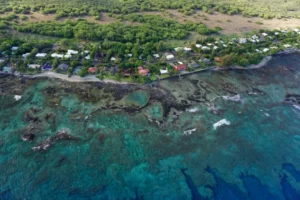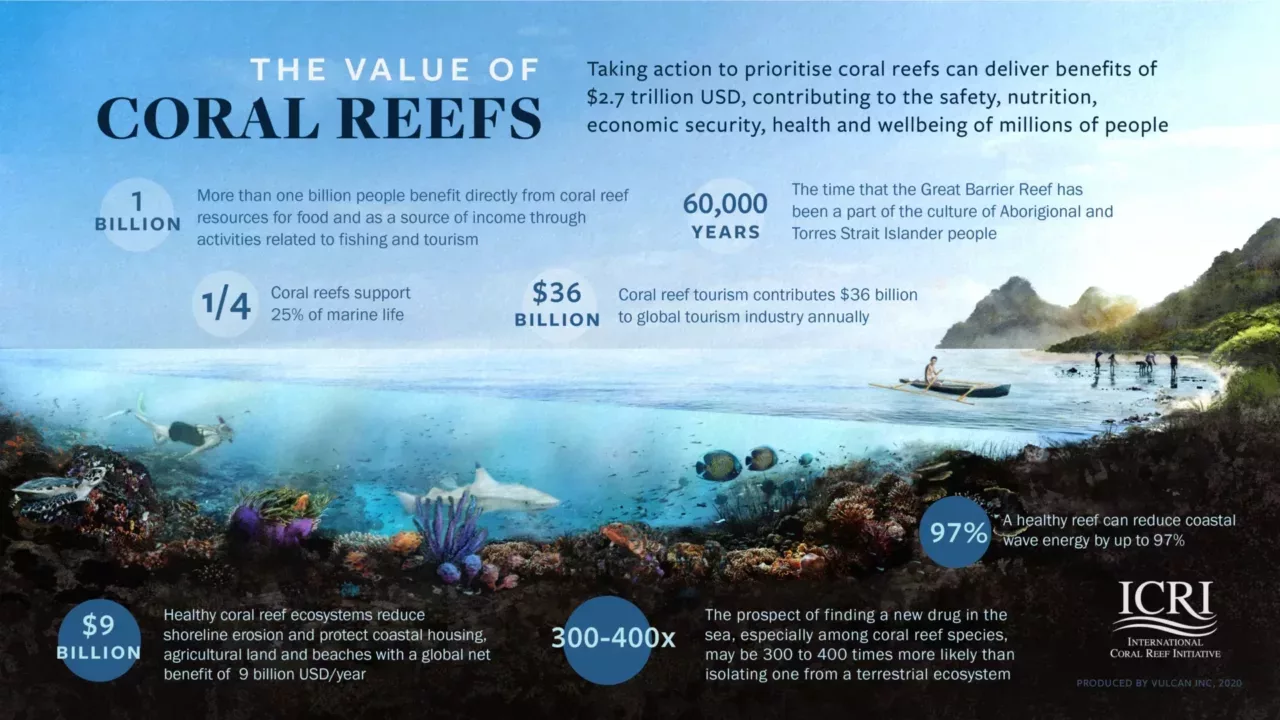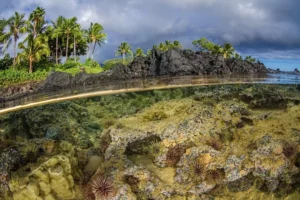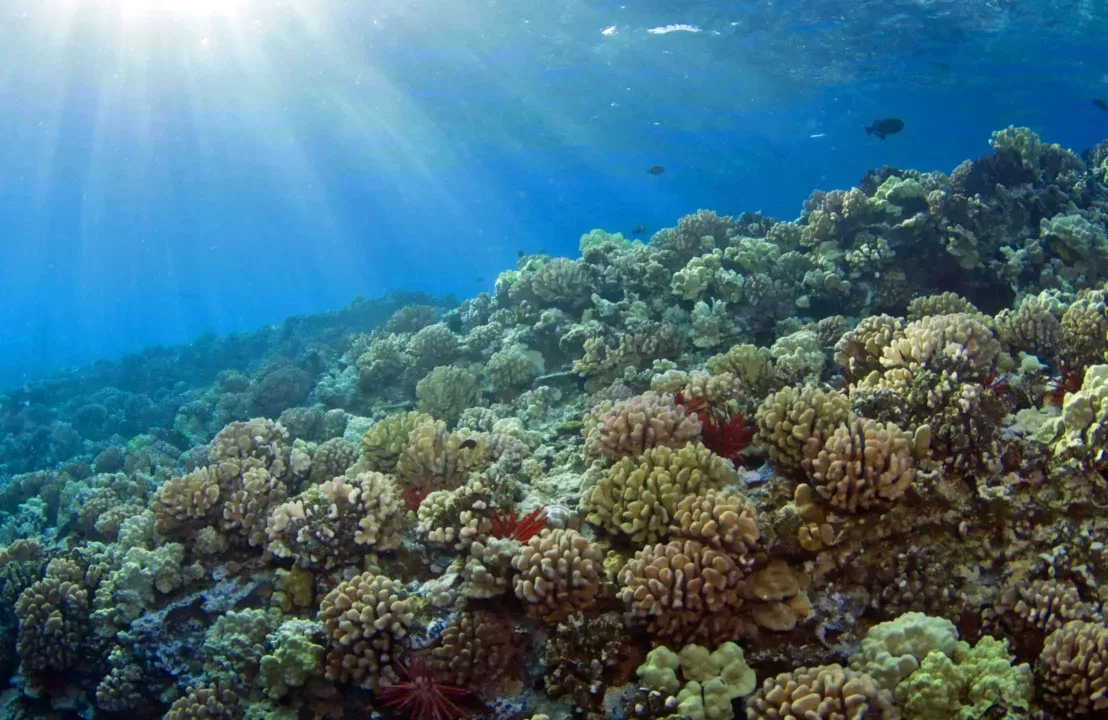Climate change is increasing the rate at which coastal communities and areas, including coral reefs, are hit by stressors such as storms and hurricanes, with assistance increasingly needed to repair and restore the damages. Could insurance be a key to resilient coral reefs?

In a first in the US, The Nature Conservancy purchased an insurance policy in November 2022 so that reefs hit by hurricanes or tropical storms in Hawai’i can get the funds needed to respond to these threats. Building on previous coral reef insurance policy efforts, models like this provide an innovative way to ensure costs are covered to repair and restore coral reefs, and local communities are supported.
Coral reefs provide a wide range of key services and benefits to local communities, contributing to the safety, nutrition, economic security, and health and well-being of millions of people worldwide. One such benefit is coastal protection; whereby healthy coral reefs can reduce shoreline and protect coastal developments by reducing coastal wave energy by up to 97%.


Insurance mechanisms are an effective tool to ensure coral reefs’ ability to protect coasts and support biodiversity and local communities, as demonstrated by the world’s first reef insurance policy for hurricane damage established in 2019 by The Nature Conservancy and partners in Mexico. The model has now been expanded, with the Mesoamerican Reef (MAR) Fund, working in collaboration with Willis Tower Watson (WTW)’s Climate and Resilience Hub, having built a parametric insurance program across the MAR region, from southern Mexico through Belize, Guatemala and Honduras.
In Hawai‘i’, the insurance policy has a set of pre-agreed pay-outs for repair and restoration based on pre-established parameters. When specific conditions are met, such as wind speeds reaching certain highs, the insurance payout is released to allow a rapid and efficient response.

The Nature Conservancy is now working with partners to replicate models established in Mexico and Hawai‘i’ in other locations to ensure a resilient future for coral reefs worldwide.
Article adapted from a web article and a press release by The Nature Conservancy.

